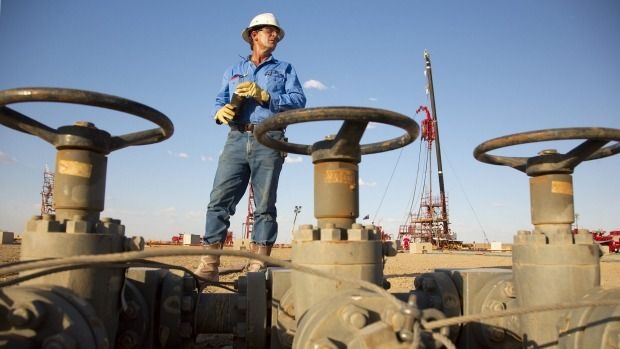
Most investors believe that the U.S. dollar is the primary influence upon commodity prices . While there certainly is a strong correlation between the dollar and commodities, we would argue that the real dynamics in the market work slightly differently.
. While there certainly is a strong correlation between the dollar and commodities, we would argue that the real dynamics in the market work slightly differently.
Example: Oil has the potential to set the dollar price, which in turn puts pressure on the broader commodity complex. Has the world turned upside down? Please bear with us as we explain our view.
There is an almost perfect negative correlation between crude oil and the U.S. dollar. Consequently, crude oil has a strong positive correlation with the euro. The next two charts show those relationships.
Crude Oil (red) versus EUR (black)
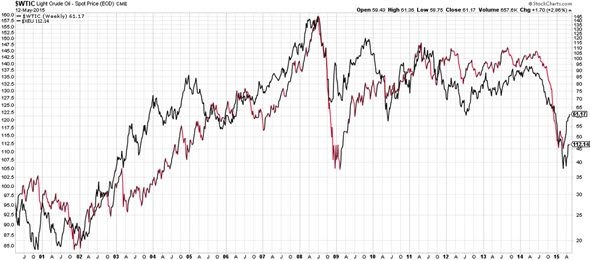
Crude Oil (red) versus USD (black)
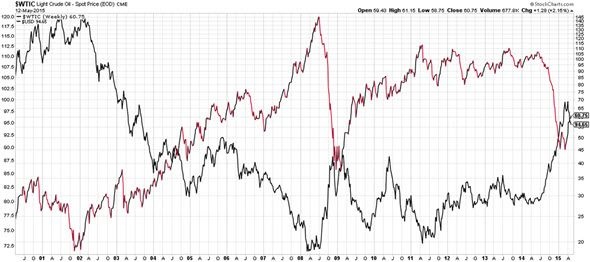
Examine the oil/currency correlation. Crude oil is one of the largest markets with an annual value of $1.7 trillion so its moves strongly influence other markets. As the price of crude oil drops, there are fewer dollars in circulation. Consequently, the dollar price rises, and the euro falls.
drops, there are fewer dollars in circulation. Consequently, the dollar price rises, and the euro falls.
Moreover, it appears that oil exporting countries (think Saudi Arabia or Iran) trade oil in dollars but they invest part of their reserves in euros, according to Robert Gabriel Luta. When the oil price
countries (think Saudi Arabia or Iran) trade oil in dollars but they invest part of their reserves in euros, according to Robert Gabriel Luta. When the oil price falls, their revenues decline, and they transfer fewer reserves from dollars into euros.
falls, their revenues decline, and they transfer fewer reserves from dollars into euros.
Recently, Saudi Oil Minister Ali Al-Naimi said, “no one can set the price of oil – it’s up to Allah.” (source: Zerohedge)
One of the most influential individuals in the oil market worldwide probably knows better. What is really occurring?
The next chart says it all. The global oil supply and demand picture shows that OPEC increased oil production last September for the first time in more than 1.5 years, as marked with the green circle. Until that time OPEC was consistently reducing their oil production 0.5 to 1 million barrels per day.
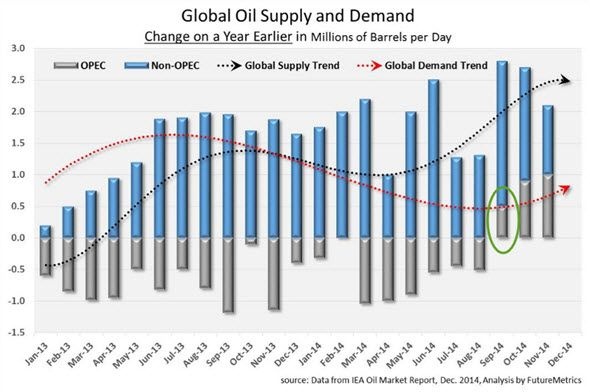
Was it coincidence that the oil price began to crash exactly one month before? No, and it was not Allah, as suggested by Mr. Al-Naimi. Some market participants knew more at the time.
It is clear, based on these data, that oil is one of the fundamental drivers in the currency markets , hence driving the prices for other commodities.
, hence driving the prices for other commodities.
It is even more clear that Saudi Arabia is one of the most influential market participants. By slightly increasing their oil production, they drove the dollar up in the strongest rally in three decades, causing turmoil in currency markets and commodities. In addition several export dependent companies in the U.S. are suffering from a stronger dollar with deteriorating quarterly earnings reports.
and commodities. In addition several export dependent companies in the U.S. are suffering from a stronger dollar with deteriorating quarterly earnings reports.
It is no overstatement to say that Saudi Arabia lies at the epicentre of the global markets.
It is human nature to both look for causality and also to understand “why” things are as they are. We cannot know the motives for the increase in Saudi oil production in September of last year. However we see two logical explanations.
The first scenario is that Saudi Arabia wanted to show their power (read: their financial muscle). They truly can have a devastating effect, as evidenced by the consequences of their actions on the number of oil rigs in the U.S. According to the American Oil & Gas Reporter, there were 1854 rigs in the first week of May of last year, while today (exactly one year later) there are only 894. The chart below shows the speed of decline with the red bars. Probably more important is the effect on the shale oil industry. Oil output from the most productive U.S. shale fields started slowing in April of this year. According to the U.S. Energy Information Administration, the most productive shale producers had an output of 5.62 million barrels per day in April, and are expected to have an output of 5.64 million barrels per day in May and 5.55 million barrels per day in June. It was four years ago that the last month-on-month decline took place, according to Reuters.
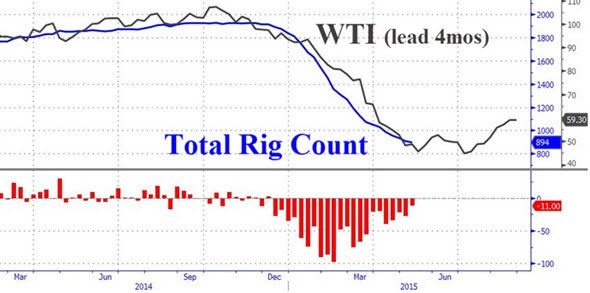
The other scenario is that the U.S. worked with Saudi Arabia to drive up the dollar. As explained in our recent article “Is the USA manipulating its own currency before an important IMF meeting?” the U.S. wanted to drive up the dollar to strengthen their position in the IMF. The red flag for the U.S. is that China recently showed interest in joining the SDR system with its national currency (the yuan). The Americans see the upcoming power of the Chinese yuan as a big risk.
The “damage” caused with severely lower prices in Saudi Arabia seems “contained” as evidenced by their quarterly GDP growth. The next chart shows that their GDP has slowed since the collapse of the oil price, but it’s still growing.
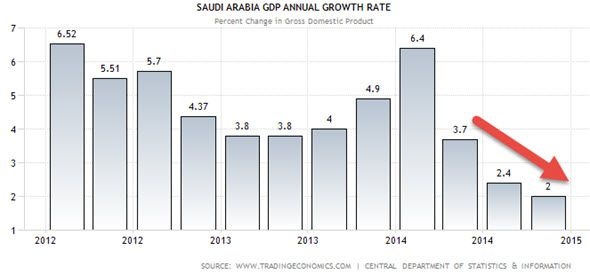
What is the actionable insight that we can we as analysts can give to small investors? We conclude that the oil market has a fundamentally large impact upon the investment world, and that following crude oil closely, in relationship to the euro and the dollar, is of greater importance to one’s portfolio than most investors can comprehend.
has a fundamentally large impact upon the investment world, and that following crude oil closely, in relationship to the euro and the dollar, is of greater importance to one’s portfolio than most investors can comprehend.



